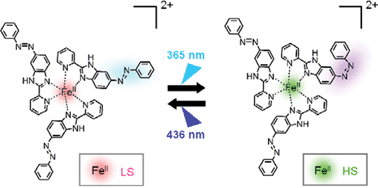Reversible light-induced magnetization change in an azobenzene-attached pyridylbenzimidazole complex of iron(ii) at room temperature†
Abstract
Reversible photomagnetic effects were demonstrated at room temperature by the use of a new iron(II) complex t100c0-[Fe(1)3](BF4)2·3H2O (1 =


 Please wait while we load your content...
Please wait while we load your content...